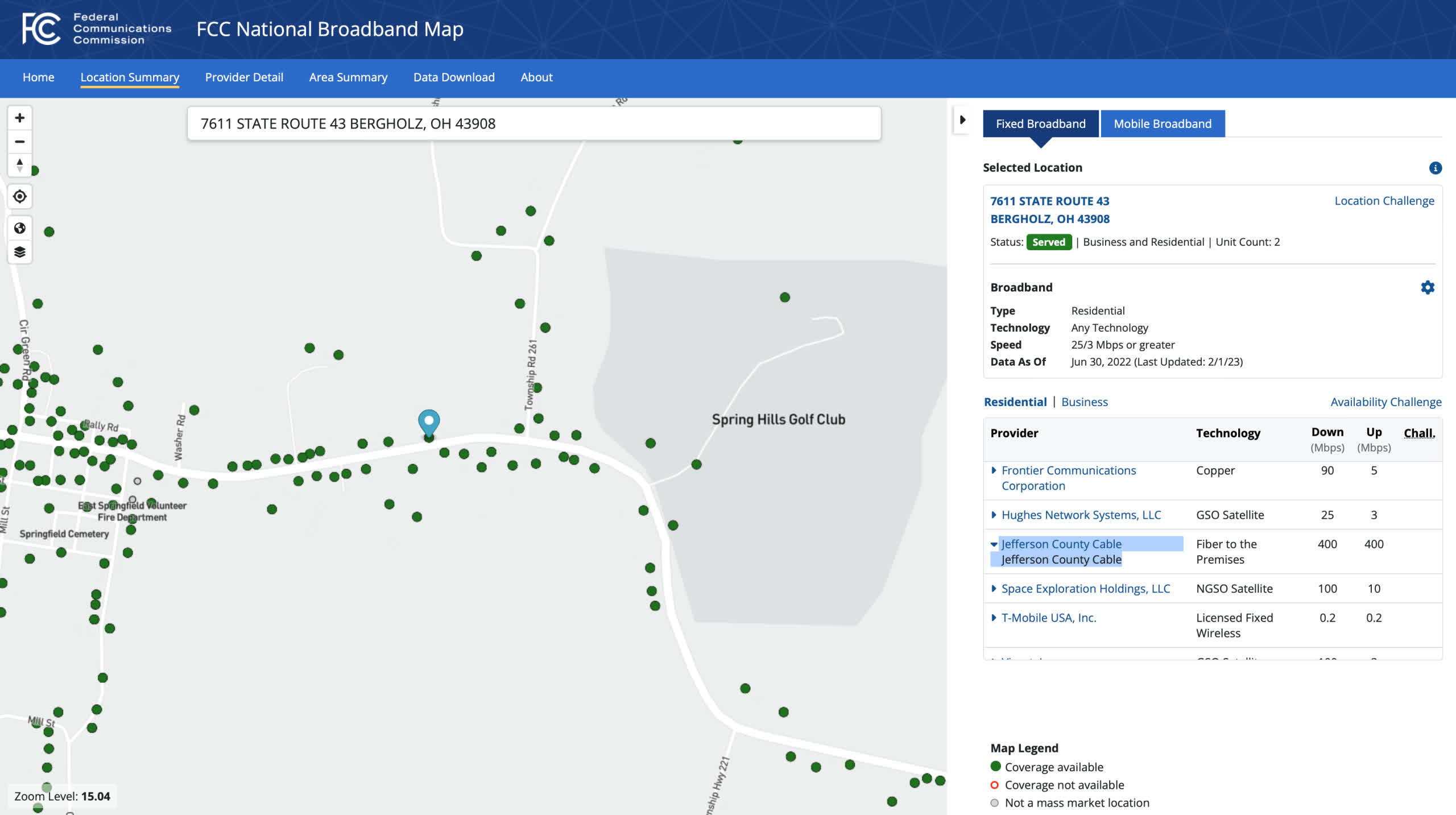[ad_1]
Shady: We’ve all been suspicious of cell and internet coverage maps. Every provider claims to have the best coverage, which is impossible, so there is good reason not to trust any of them. But fudging their coverage borders is more than just about getting your business. Some ISPs are laying undue claim to competing service providers’ regions to prevent them from receiving grants to expand and improve local area broadband.
Ohio ISP Jefferson County Cable (JCC) accidentally snitched itself out to the Federal Communications Commission recently for claiming coverage in an area it did not service. It started when Ryan Grewell, general manager for local rival provider Smart Way Communications, got calls from some of his customers saying that an updated FCC broadband map listed their addresses as having fiber internet service offered by JCC.
Smart Way services these addresses, not JCC, so Grewell submitted several challenges to the FCC. At least one of the submissions got back to JCC executive Bob Loveridge. Thinking he was responding to the resident at the challenged address, Loveridge sent an email to Grewell admitting that his company lied to prevent its competitors from receiving grant money for fiber development in that area. Grewell shared the communication with Ars Technica.
“You challenged that we do not have service at your residence and indeed we don’t today,” the January 9 email reads. “With our huge investment in upgrading our service to provide xgpon [10-Gigabit-capable passive optical network], we reported to the BDC [Broadband Data Collection] that we have service at your residence so that they would not allocate addition [sic] broadband expansion money over [the] top of our private investment in our plant.”
Grewell didn’t know whether to be outraged or amused.
“This cable company happened to just say the quiet part out loud,” he told Ars over the phone. “[It’s] a blatant attempt at blocking anyone else from getting funding in an area they intend to serve.”
As far as anyone can tell, Jefferson County Cable has no announced plans to develop fiber in the area in question. Since the FCC multibillion-dollar expansion program’s grant money is awarded where it is needed, JCC had to admit to the commission that it made a mistake and submit a correction.
Ars confirms that the coverage map was, indeed, updated. Unfortunately, it only excludes a single address in the contested area along Route 43. The homes next door and on the same street still show fiber service supplied by JCC.
Furthermore, the issue is even more widespread than a single Ohio town. Officials in Nevada discovered the FCC’s map has at least 20,000 mistakes in their state. Likewise, Vermont reported over 60,000. Ars Technica notes that currently, there are over a million challenges to the FCC map nationwide.
If claims are looked at and responded to one at a time, who knows how long it could take to get the map fully corrected? Meanwhile, until everything is accurate, entire regions eligible for federal grant money to help expand and improve local infrastructure remain hostage to lying ISPs.
[ad_2]
Source link
